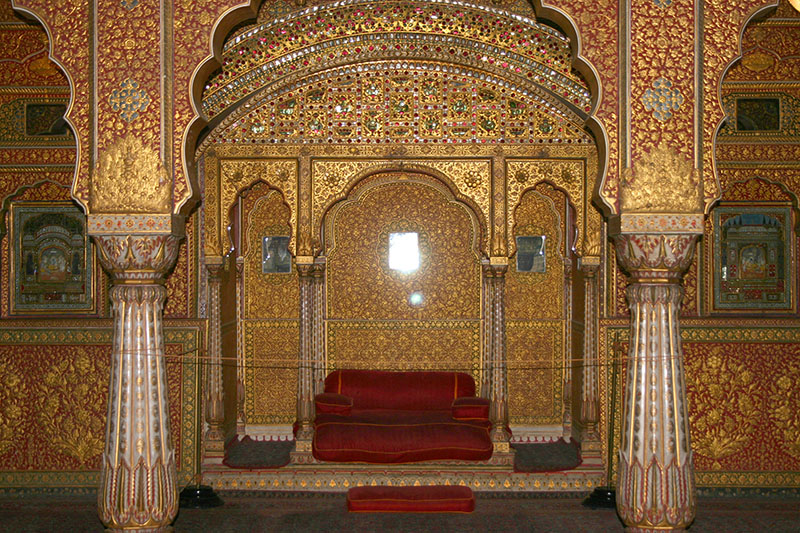Mask of Vaikuntha Vishnu, late 5th century. Learn more about 5th century masks
Designed by 

A traditional form of decorative gesso painting practised primarily in Bikaner, Rajasthan. It derives its name from the Usta community of artisans who specialise in the technique. The community migrated from Multan in present-day Pakistan to the Mughal court in Delhi and, later, to Bikaner. The technique was used to decorate interior surfaces, such as the walls and pillars of structures like the Junagadh Palace and Anup Mahal in Bikaner. Since the colonial era, it has also been used to decorate objects made from camel hide. It typically consists of two processes: manoti or munabhati, the embossing on a flat surface, and nakashi or naqqashi, the painting of the manoti.